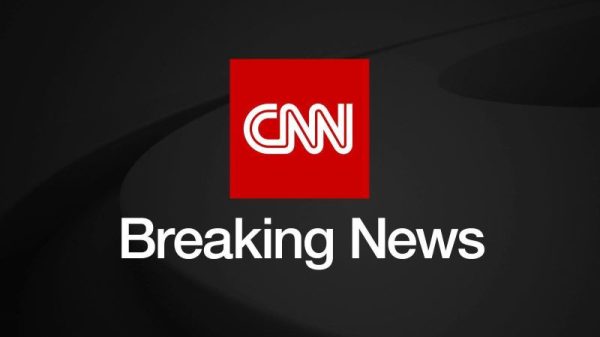With two weeks of campaigning left before the 2024 election, Vice President Kamala Harris and former president Donald Trump are running nearly evenly across the seven battleground states among a critical portion of the electorate whose votes likely will determine who becomes the next president.
A Washington Post-Schar School poll of more than 5,000 registered voters, conducted in the first half of October, finds 47 percent who say they will definitely or probably support Harris while 47 percent say they will definitely or probably support Trump. Among likely voters, 49 percent support Harris and 48 percent back Trump.
Trump’s support is little changed from the 48 percent he received in a spring survey of six key states using the same methodology, but Harris’s standing is six percentage points higher than the 41-percent support registered for President Joe Biden, who was then a candidate.
In addition to swing-state voters overall, the Post-Schar School survey focuses on a sizable group of registered voters who have not been firmly committed to any candidate and whose voting record leaves open whether they will cast ballots this fall. With another part of the electorate locked down for a candidate for many months, this group of “Deciders” could make the difference in an election where the battleground states could be won or lost by the narrowest of margins.
The new results show changes among this group of voters compared with the first survey conducted last spring. About three-quarters of battleground-state voters say they will definitely vote for Harris or Trump (74 percent). That’s up from 58 percent who were committed to Biden or Trump this spring. The percentage who are uncommitted has dropped from 42 percent to 26 percent over the past five months. Among likely voters, the latest poll finds that a smaller 21 percent say they are not fully committed to Harris or Trump.
Younger registered voters are more likely to be uncommitted: 43 percent of 18- to 25-year-olds are uncommitted, a larger share than any other age group. Non-White voters are more likely to be uncommitted than White voters, 34 percent vs. 23 percent.
Trump is strongest in Arizona, where he holds an edge of six percentage points among registered voters. That shrinks to three points among likely voters. His four-point edge in North Carolina among registered voters ticks down to three points among likely voters. That echoes a Post poll conducted last month but contrasts with a Quinnipiac poll suggesting Harris may have a slight edge. Those advantages are within the margin of error.
Among these key-state voters, Harris runs strongest in Georgia, where she has an advantage of six percentage points among registered voters and four points among likely voters, which is within the margin of error of plus or minus 4.5 percentage points. Harris also is slightly stronger than Trump in the three most contested northern states — Michigan, Pennsylvania and Wisconsin — but by percentages within the margin of error.
The seventh battleground state, Nevada, is tied among likely voters though Harris is three points stronger than Trump among registered voters.
Overall in these seven states, 37 percent of registered voters say they will definitely vote for Harris and 37 percent will definitely back Trump, or already voted for each. An additional 10 percent say they will probably vote for Harris, 10 percent probably for Trump. Harris’s 37 percent “definite” support is up sharply from Biden’s 26 percent this spring. Trump’s firm support has grown by a smaller six points, from 31 percent to 37 percent.
The poll sample also includes some voters who had been interviewed last spring and who said they were uncommitted at the time. The new survey finds that about half (46 percent) have shifted to definitely supporting one of the two candidates, with more moving to Harris than have moved to Trump.
Six percent of all key-state voters say they are unlikely to support either Harris or Trump and most of these voters say that, if Trump and Harris are the only two candidates on their ballot, they are likely not to vote in the presidential race. These voters tend to be younger, more likely to be people of color and more likely to identify themselves as independents.
Among voters who have a record of voting in just one of the past two presidential elections, 78 percent say they will definitely vote this year or have already voted. They are about evenly divided between Trump (47 percent) and Harris (46 percent). Among voters who turned out in both 2016 and 2020, 49 percent support Harris while 47 percent support Trump.
The poll underscores how dependent Trump and Harris are on halfhearted supporters. Only 13 percent of “probably Harris” voters say they would be enthusiastic if she wins, while 11 percent of “probably Trump” voters say the same about him. About 4 in 10 of each group say they would feel “upset” if the other candidate wins, compared with about 8 in 10 voters who are locked in for each candidate.
Steven Grissom, a 54-year old White stagehand in Las Vegas said, “I sure as hell don’t like my choice,” but that he was going to vote for Trump. “I could leave it blank,” he said, “I don’t want my lack of vote to give [the election] to Kamala.”
Harris’s job approval rating as vice president is net negative with these swing state voters: 44 percent approve of the job she is doing while 55 percent disapprove, with 42 percent disapproving strongly. Asked for a retrospective judgment on Trump as president, 51 percent say they approve of the way he handled the job while 49 percent disapprove, 37 percent strongly.
Two groups of voters have drawn significant attention this fall: Hispanic and Black Americans. Among Hispanics, Harris is faring slightly worse in these seven states than Biden did four years ago among Hispanic voters throughout the country. She leads Trump by 22 points across all seven states among registered voters, which compares with Biden’s national margin of between 25 and 33 points against Trump, according to 2020 exit polls, AP VoteCast and Pew’s validated voter study.
But in two battlegrounds with higher percentages of Hispanic voters she’s about even with Biden in 2020. Harris leads by 24 points among Hispanic voters in Arizona and 16 points in Nevada. Both are roughly on par with Biden’s advantages in those states four years ago, according to exit polls and other post-election estimates.
Harris leads by an 82 to 12 percent margin among Black voters in these seven swing states, a 70-point margin that is slightly smaller than Biden’s national advantage with Black voters four years ago.
Black voters make up one-third of the electorate in Georgia and about one-fifth in North Carolina. The poll finds Harris with slightly more support among Black voters in Georgia (83 percent) than in North Carolina (78 percent). Meanwhile, in the northern trio of Pennsylvania, Michigan and Wisconsin, 85 percent of Black voters currently back Harris. The issue for Harris there is ensuring strong Black turnout in the cities of Detroit, Philadelphia and Milwaukee.
Kobe Sifflet, a 21-year-old Black deli clerk in Atlanta, said he was still undecided and wanted to hear more about Harris’s plans. Trump “seems a bit extreme,” to him.
Malik Williams, 27, a Black voter in Stone Mountain, Ga., who manages a tattoo parlor, said he would probably vote for Harris. “I think Trump’s trying to push a more police state in terms of creating unnecessary conflict with citizens, versus actually trying to make the country better.”
The gender gap between the candidates amounts to 14 percentage points. Harris leads among female voters in swing states by seven points while Trump leads among all men by the same percentage. The divide is largest among younger voters, with women under age 30 favoring Harris by 20 points while men under 30 favor Trump by 15 points.
Education is the principal dividing line among White voters in the survey. White voters with college degrees support Harris by 50 percent to 45 percent. White voters without degrees back Trump by about 2 to 1.
Kacey Campbell, a 30-year-old school administrator from Milwaukee who is White, said she is leaning more toward Harris, but calls it “just a slight lean.” She watched both debates to try to lock in a decision but is disappointed in how both candidates have addressed the Israel-Gaza war. She said the “scale of destruction” in Gaza affects her confidence in voting for the Democratic Party. She criticized Democrats for saying “we’re not Donald Trump, we’re not Project 2025,” rather than running on their own policies.
“Being disaffected or discontented with the choices is not an irrational sentiment for people to have, said Mark Rozell, dean of the Schar School of Policy and Government at George Mason University, “especially when they see the hyperpolarization going on, the inability of parties to work well together to solve problems.”
Trump’s current margin among White voters without college degrees in Wisconsin and Pennsylvania is about the same as it was in 2020. In Michigan, however, he’s running better with these voters than he did four years ago. Meanwhile, Harris is running ahead of Biden’s 2020 margins among Whites with college degrees in Wisconsin but about the same in Pennsylvania and Michigan.
Emily Dembs, a 33-year-old White voter from St. Clair Shores, Mich., said they are torn about whom to vote for. “I really don’t like Trump at all. I think he’s a lying scumbag.” But the Democratic Party to them, “has felt so phony.” If they do vote, they will vote for Harris. “Voting for Harris is probably a good idea, I just wish we had more options or different people.”
Threats to democracy rank high as an issue to the voters in these states, with 61 percent overall saying it is extremely important, including 71 percent of Democrats, as well as 61 percent of Republicans and 55 percent of independents.
Slightly more registered voters in these states trust Trump over Harris to handle threats to democracy in the United States, 43 percent to 40 percent. This is also true among uncommitted voters, with 32 percent saying they trust Trump, 28 percent Harris and 26 percent trusting neither candidate.
At this point, the economy and inflation stand out as more important to the remaining uncommitted voters than other issues, a potential problem for Harris.
Potential Harris voters are much more likely to feel the economy is getting worse (56 percent) and inflation is getting worse (69 percent) than are committed Harris voters (25 percent and 36 percent). In fact, the annual rate of inflation was 2.4 percent in September, a significant improvement over the 9.1 percent in June 2022.
A majority of probable Harris voters call the economy extremely important (55 percent) and inflation extremely important (59 percent), compared to a minority of committed Harris voters (44 percent and 43 percent).
By contrast, a majority of probable Trump voters call climate change a crisis or major problem (67 percent) compared to a majority of firm Trump voters who call it a minor problem or no problem at all (61 percent). Probable Trump voters are more likely to rate climate change as extremely or very important (39 percent) than firm Trump voters (24 percent).
A similar gap exists between likely and committed Trump voters on abortion. A majority of probable Trump voters support legal abortion in all or most cases (60 percent), while a majority of committed Trump voters want it to be illegal in most or all cases (59 percent).
Nearly two-thirds of voters (65 percent) think Trump will make “fundamental changes to the country,” including 40 percent who think he’ll make fundamental changes for the better while 25 percent say he will for the worse. Fewer than half of all key-state voters think Harris will make fundamental changes to the country (47 percent), 30 percent for the better and 17 percent for the worse. Smaller shares of uncommitted voters say both candidates will make fundamental changes to the country than key-state voters overall.
The voters in these states are keenly aware of the importance of what happens in each of them in November. Three in 4 voters say this makes them feel empowered that their vote can make a difference in the outcome.
More than 6 in 10 say they do not feel pressure to make the right choice and, when asked whether they do not care which candidate wins, 85 percent say that does not describe them.
“I take it as a pretty big responsibility,” said Richard Schall, a 31-year-old White postal worker and U.S. Army veteran from Latrobe, Pa., who plans to vote on Election Day. Despite his concerns about Trump frequently being disrespectful, he “leans more toward Donald Trump on the basis that I’ve seen him as president and the uncertainty of Harris … I don’t think the way Trump handled things was so inherently bad that it was dangerous.”
There are some disadvantages to being in competitive states, among them being the saturation level of advertising aimed at the voters. About 3 in 4 voters in the Post-Schar School poll say they are “annoyed” by these advertisements, but there’s not likely to be any escaping them between now and Election Day.
This poll was conducted by The Post and George Mason University’s Schar School of Policy and Government Sept. 30 to Oct. 15 among a stratified random sample of 5,016 registered voters in Arizona, Georgia, Michigan, Nevada, North Carolina, Pennsylvania and Wisconsin. The overall margin of sampling error is plus or minus 1.7 percentage points, state sample sizes ranged from 580 to 965 voters with error margins between 3.9 and 5.0 points. The sample was drawn from the L2 database of registered voters in each state; all selected voters were mailed an invitation to take the survey online, with additional contact efforts from live-caller interviewers, text messages and emails. Sample design, data collection and processing was conducted by SSRS of Glen Mills, Pa.







































